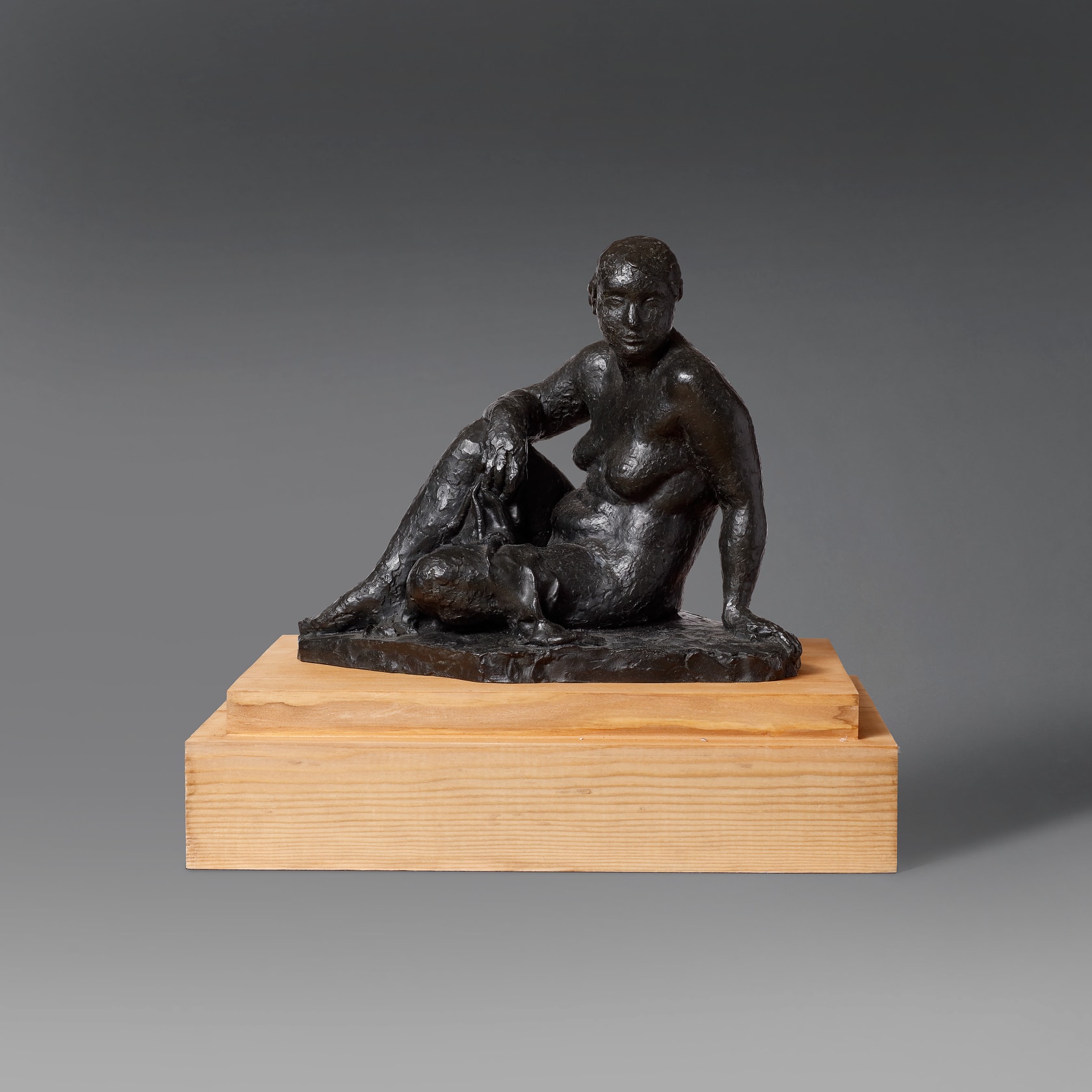Many of Tomlin’s sculptures, of which this is a notable example, exude a timeless quality, despite being grounded in a truly modernist vision. In this sense, he is indebted to his teacher, Frank Dobson, who can be considered a leading figure in the transitional phase between the idealism of the nineteenth century, and the later stylistic developments of artists such as Henry Moore and Barbara Hepworth.[1].
This work was likely sculpted in the early to mid-1920s when Tomlin’s style was still influenced by his tutor. The surface of this nude echoes the rough marks of the individual clay pellets with which it was sculpted, a technique that is equally pronounced in his bust of Duncan Grant produced in 1925. Sculptors such as Auguste Rodin had paved the way for such a tactile treatment of surface, in contrast to the smooth, unblemished surfaces that governed classically inspired modelling.
In 1925, Tomlin was featured in Vogue’s November 1925 edition, alongside the...
Many of Tomlin’s sculptures, of which this is a notable example, exude a timeless quality, despite being grounded in a truly modernist vision. In this sense, he is indebted to his teacher, Frank Dobson, who can be considered a leading figure in the transitional phase between the idealism of the nineteenth century, and the later stylistic developments of artists such as Henry Moore and Barbara Hepworth.[1].
This work was likely sculpted in the early to mid-1920s when Tomlin’s style was still influenced by his tutor. The surface of this nude echoes the rough marks of the individual clay pellets with which it was sculpted, a technique that is equally pronounced in his bust of Duncan Grant produced in 1925. Sculptors such as Auguste Rodin had paved the way for such a tactile treatment of surface, in contrast to the smooth, unblemished surfaces that governed classically inspired modelling.
In 1925, Tomlin was featured in Vogue’s November 1925 edition, alongside the likes of HG Wells and Maurice Baring, as ‘one of the most promising sculptors of the younger generation' with a 'great gift for portraiture’.[2] Around this time, Tommy left his studio in Fulham (which he had been renting since 1923) for another in Hampstead, next to the Heath. Hampstead Heath was one of the most notable gay areas in Europe, no doubt a liberating environment for the young Tomlin. His new studio was owned by Lytton Strachey’s good friend, the Russian mosaicist Boris Anrep, who in 1926 was commissioned to do produce the series of mosaics at the National Gallery - his tableaux entitled ‘art’ is almost certainly a portrait of Tomlin sculpting [fig. 1].
This nude, which remained in the artist’s collection until his death, exemplifies the artist’s versatility and understanding of traditional sculpture, this modernist re-imagining of the reclining nude speaks to Tomlin’s technical and intellectual mastery of his medium.
[1] M. Bloch and S. Fox, Bloomsbury Stud: The Life of Stephen ‘Tommy’ Tomlin. London, M.A.B., 2020, p.36-7.
[2] Vogue.





